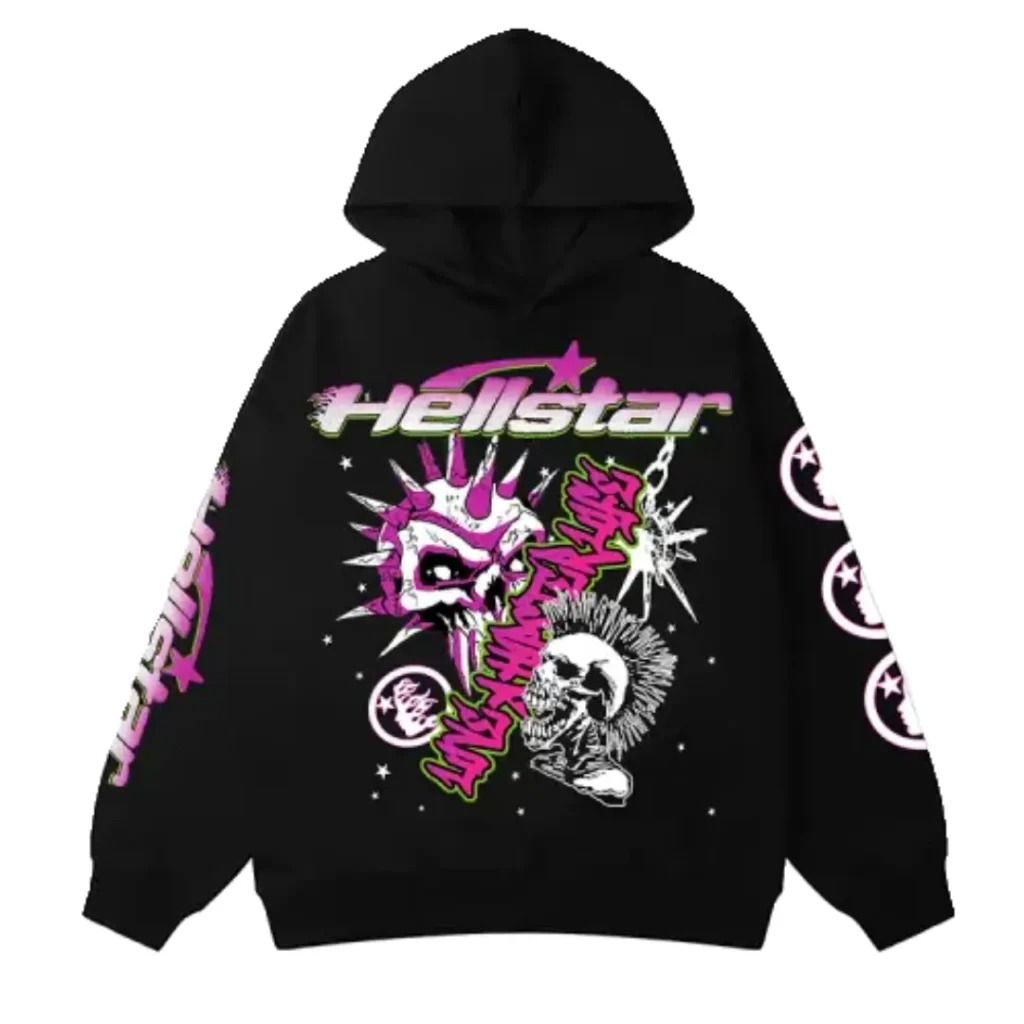Hellstar fashion first emerged from underground subculture scenes during early twenty-tens. Designers crafted provocative streetwear pieces with symbolic star motifs and rebellious energy. The label’s early offerings emphasized statement silhouettes and graphic star patterns integrated into street looks. Influences included punk culture, cosmic symbolism, and urban art scenes across various regions. Hellstar history reflects gradual evolution from grassroots activism toward edgy fashion appeal. Its name invokes dark celestial imagery and daring creative narratives aligned with youth identity. This foundational background clarifies why Hellstar attracts cult followings through fashion authenticity.
Product Offerings That Define Hellstar Aesthetic
Hellstar releases include apparel items like jackets, tees, trousers, layering pieces in monochrome. Their accessories lines feature star‑shaped jewelry, bags, hats embellished with metallic hardware accents. Each piece incorporates signature star motifs and often distressed or deconstructed fabric treatments. Consumers appreciate limited edition capsules with distinctive prints and graphic overlays. Seasonal drops introduce new hellstar hoodie patterns while retaining consistent star‑centered design elements across collections. Graphic tees often carry celestial themes and rebellious slogans referencing Hellstar visual identity. These offerings consistently align with the brand’s core youth‑driven aesthetic and visual ethos.
Key Collaborations That Elevated Hellstar Brand
Hellstar collaborated with established streetwear labels to amplify creative synergy and cross‑reach impact. Past partnerships included limited capsule lines with urban art collectives and character illustrators. Collaborations brought experimental star‑driven prints, unconventional cutouts and multi‑layered thematic imagery. These joint releases often sold out rapidly and driven by dedicated community eagerness. Collaborative items gained extra visibility through social media amplification and influencer endorsements. The strategic alliances broadened awareness within overlapping streetwear and alternative fashion audiences. Collaboration history underscores Hellstar’s ability to innovate through shared creative ventures successfully.
Hellstar Fashion Trends Followers Adopt
Followers embrace monochrome layering techniques with star motif accessorizing for signature styling. Street style fans incorporate oversized tees with star‑patterned outerwear and rugged bottom pieces. Jewelry pieces featuring star charms, rings, necklaces complete the aesthetic alongside minimalistic headwear. Designers recommend pairing graphic trousers with metallic accent jackets and heavy boots. Color palettes focus primarily on black, white, dark grey or muted metallic shades. Trendsetters mix textures from distressed finishes to sheen accents for dimension. These trends maintain cohesion with Hellstar identity while allowing personalized statement expression.
Market Impact and Cultural Resonance
Hellstar gained traction through social media communities documenting outfit posts featuring star patterns. Influencers and micro‑influencers often shared styled looks, boosting brand awareness organically. Sales growth occurred in urban retail hubs and online streetwear marketplaces internationally. Fans appreciate Hellstar’s aesthetic sincerity rather than mass‑market homogeneity often dominating fashion channels. The brand’s cultural penetration reached music festivals, art venues, alternative club scenes globally. Market impact stems from authenticity, visual consistency, and engaged community interaction. Such resonance positions Hellstar within niche fashion dialogues while expanding mainstream interest gradually.
Hellstar’s Evolution Over Time
Hellstar fashion trends gradually refined silhouette structure and fabrication techniques across seasons. Early designs appeared intentionally raw and hand‑made oriented with visible stitching details. Later releases adopted more refined construction, layering elements and subtler motif integrations. Seasonal evolution included additions of neutral-toned outerwear and innovative star‑inspired print techniques. The brand incorporated sustainability initiatives by integrating recycled materials and eco‑friendly finishing processes. Design development reflects balance between edgy visual identity and practical urban wear adaptation. Hellstar’s adaptability demonstrates strength in evolving fashion trends while retaining core visual principles.
How to Incorporate Hellstar Trends
Start by introducing one star motif piece into one outfit ensemble for subtle presence. Pair statement trousers or graphic outerwear with muted basics emphasizing star pattern imagery. Accessorize minimally with star pendant necklaces, rings, or side‑strap bags for accent. Mix star motif layering pieces with contrasting textures for visual interest and edge. Choose a monochrome palette foundation to let star elements hold visual focus. Seasonal transition involves adding Hellstar outerwear combined with minimalist trousers or tops. Following these steps gives balanced integration consistent with Hellstar style cues.
Why Hellstar Matters in Modern Fashion
Hellstar trends resonate because they challenge mainstream minimalism with expressive star‑centered visual identity. The label’s authenticity appeals to individuals seeking alternative self‑expression in clothing choices. Its consistent motif usage creates clear brand recognition throughout fashion circles and social media. Hellstar also inspires emerging designers to experiment with cosmic symbolism and urban street narratives. The brand’s historical evolution underscores powerful cultural commentary embedded in star iconography. Hellstar’s relevance remains strong among younger audiences craving rebellious visual storytelling. Its impact shapes broader discussions surrounding identity, symbolism, and youth subculture fashion today.
